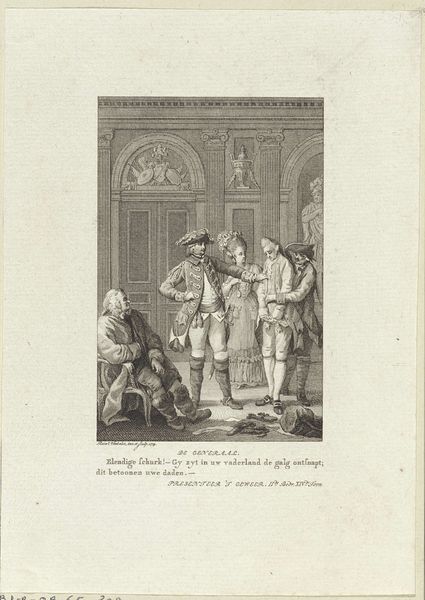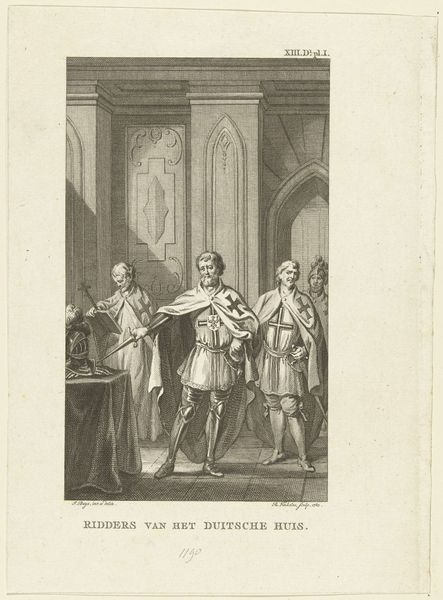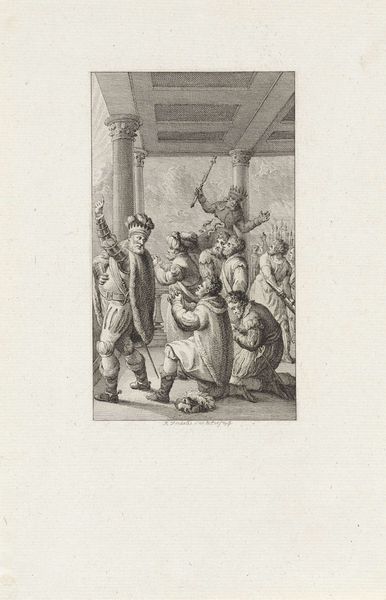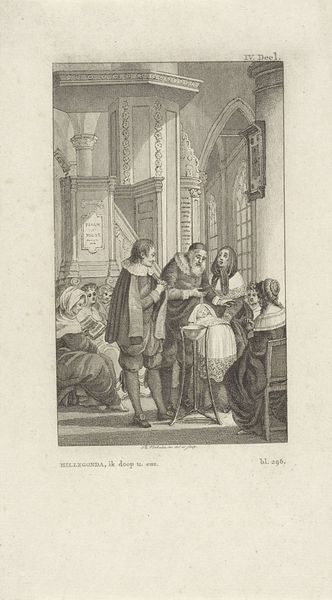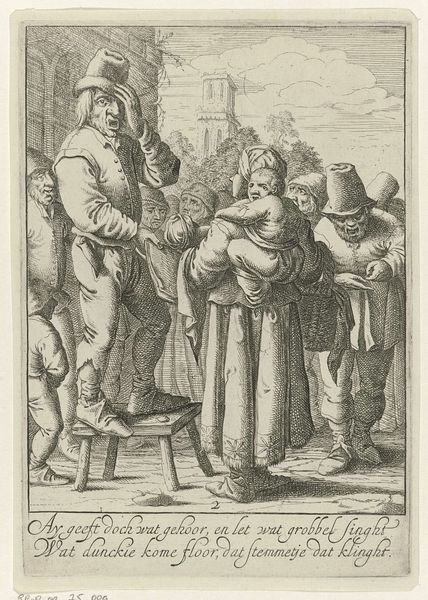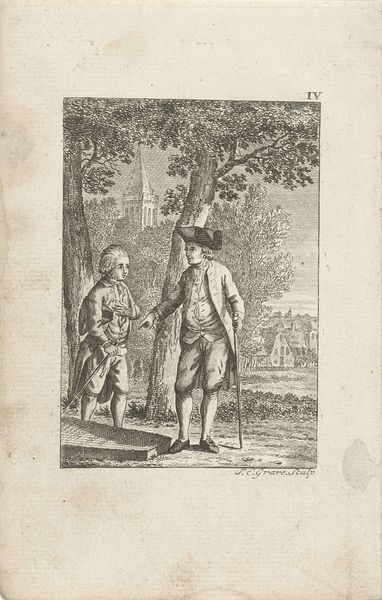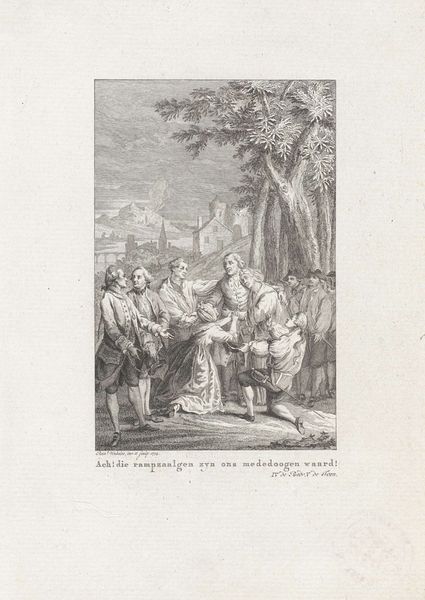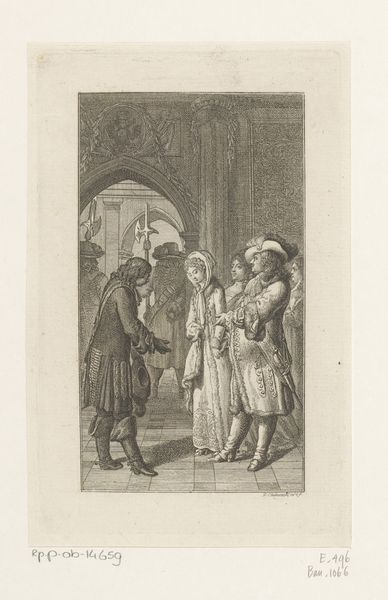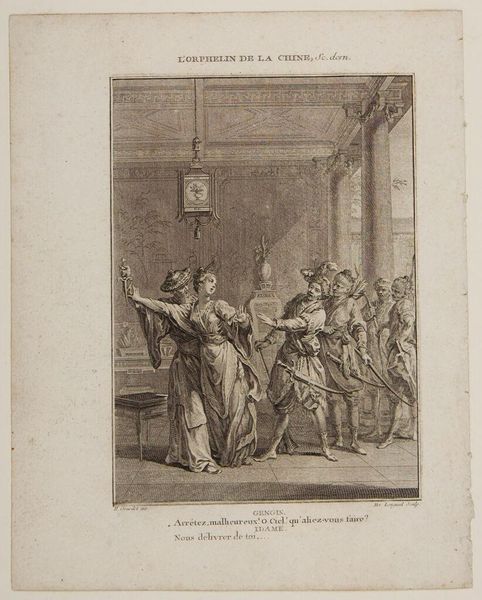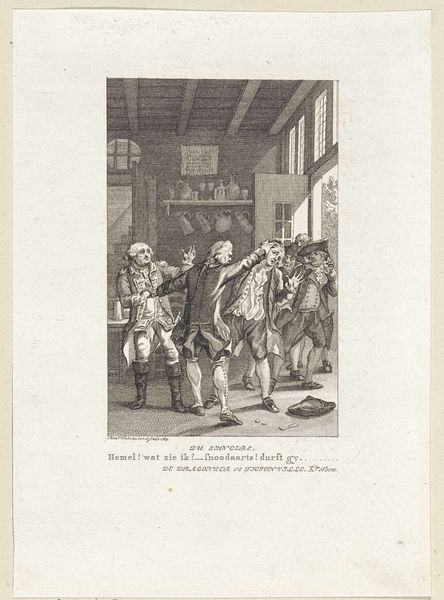
print, engraving
#
aged paper
# print
#
old engraving style
#
personal sketchbook
#
old-timey
#
19th century
#
genre-painting
#
italian-renaissance
#
engraving
Dimensions: height 265 mm, width 180 mm
Copyright: Rijks Museum: Open Domain
Editor: Here we have Carlo Lasinio’s print, "Two Street Vendors Selling Jewelry and Fabrics," likely created sometime between 1769 and 1838. It’s fascinating how much detail he gets with just engraving. I'm curious, what stands out to you in this piece? Curator: Well, what immediately grabs me is the material culture it presents. Think about what it meant to produce, transport, and sell these goods in the late 18th or early 19th century. Consider the labor involved, the class dynamics at play – the vendors, the potential consumers peering from their windows... Editor: So, you're focusing on the societal context? Curator: Absolutely. It’s not just an image, it's a snapshot of early capitalism. Who made those fabrics and jewels? What were their working conditions? Where did the raw materials originate? The print itself, an engraving, is a product of labor and a means of distribution. It lets us see and maybe participate in commerce from a distance. What does the "aged paper" tag suggest to you about its creation and availability? Editor: That it would have been widely available as it was printed on paper. Did the artist want us to consider the production side as well? Curator: I think so. Lasinio isn't just depicting a scene; he's capturing a moment in the history of material exchange. Consider, too, the architectural details – the backdrop suggests a specific place. Researching that might reveal more about the economy and social structure in Florence at the time. Editor: This makes me see the image less as just a scene and more as evidence of a whole system of making and selling. Thank you. Curator: Exactly! And examining the work this way shifts the focus from purely aesthetic concerns to a deeper understanding of the work and its broader place in a growing world economy.
Comments
No comments
Be the first to comment and join the conversation on the ultimate creative platform.
